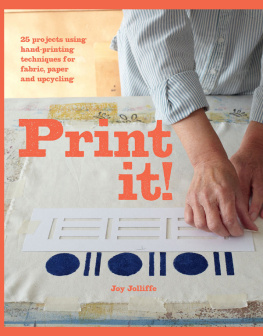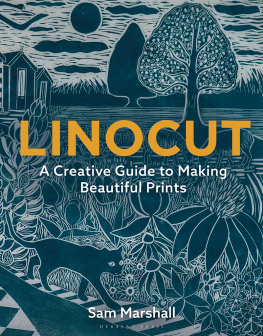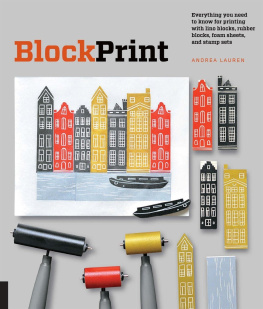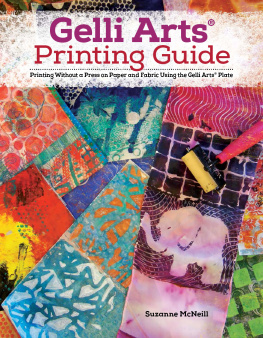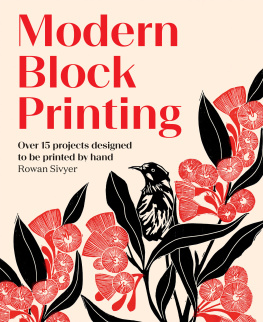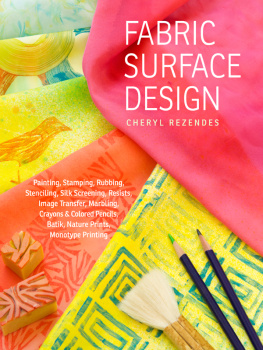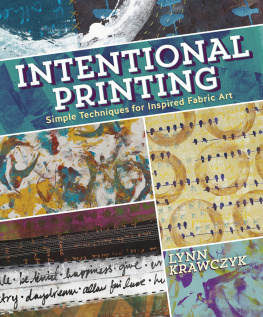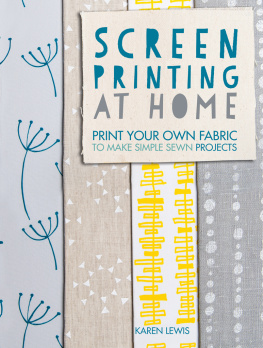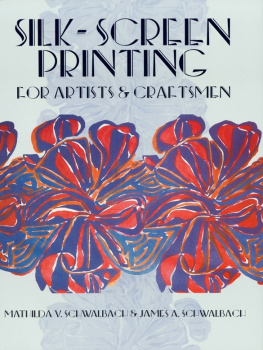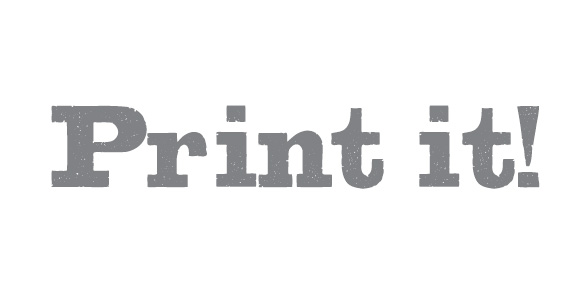
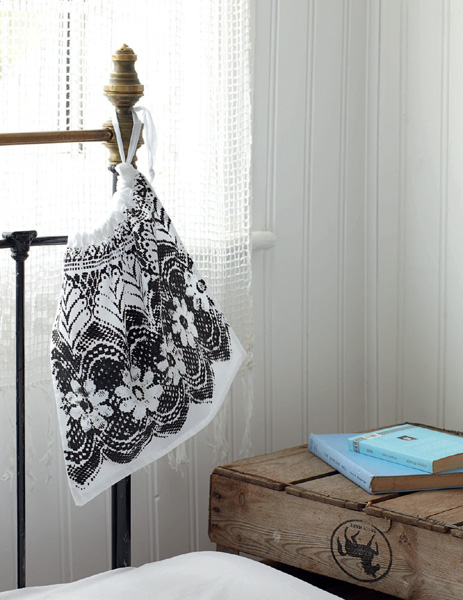


contents

introduction
It was while studying fashion design at art college many years ago that I was introduced to, and completely seduced by, screenprinting. I still feel the same excitement even now whenever I lift the screen from the fabric and see an image printed there. This was the start of an enduring fascination as I began experimenting with the infinite ways to add surface decoration to fabric. I was taught basic sewing skills at school and began making my own clothes as a young teenager. Feeling totally in tune with the
Zeitgeist of the 1970s, I joined long queues for Saturday afternoon jumble sales to spend mere pennies on gorgeous vintage clothes. It was there that my love affair with textiles truly began, and I vamped into my college lectures wearing crpe de Chine nightwear and ankle-length coats made from patterned chenille curtains.
Since that time, the interest in upcycling has grown enormously and many of these projects fit into this category: the Sundress Makeover, the Daisy Border Tea Towel, the Blue-Sky Cloud Pillowcase and many more. These projects are more than just craft, they breathe new life into old things and by reusing we help our pockets and our planet. During the years in between, I worked for some time at the local high school. Within the art department and the needlework classes we developed creative textiles projects for the new curriculum, and a lot of the ideas for this book had their beginnings in these projects. Working with mixed-ability and also some reluctant students, my aim was for everyone to taste success. The projects here are designed to encourage the less experienced and challenge the able.
As you are already reading this book, Im taking your enthusiasm for granted! As art students we were always encouraged to keep sketch- (or inspiration) books. Literally anything that we found interesting was stuck into those books: magazine cuttings, scraps of fabric, a pressed flower or a bus ticket. These valuable little books became the source of many future design ideas. I would encourage you to keep an ideas book like this, too. I still do. It keeps you focused as a creative person and helps you to remember all the ideas that come to you throughout the day.
With the techniques mastered and your confidence sky high, I hope youll spend a lot of time experimenting! You can buy ready-mixed printing inks, although the real joy comes when you start to mix your own colours. See what works and what doesnt. Find your own favourite colours and combinations. See what happens when you decorate coloured or patterned backgrounds. How do colours mix when they overlap? Textured fabric can fragment your printed image, but equally it can add interest. Try things out and just keep learning.
Finally, dont give up if a project isnt successful first time. Practice makes perfect, and experience really does improve technique. I truly hope that this book enables you to enjoy discovering your own creative potential. 
a short history of printing
Textile decoration is an ancient art. Some of the earliest samples came from China and Egypt AD
c.220, while Egyptian printed cloth dates from the 4th century. The first known example of block printing is a Buddhist scripture from AD 868.
As early as the 5th century India was exporting block prints to the Mediter ranean region, and by the 13th century this process had reached Europe, where it was used solely for textile printing. In the Americas, it evolved alongside traditional native American textile printing. Commercial textile printing began in England in 1676, with the establishment of a business near Richmond-upon-Thames. Thomas Bell invented the first cylinder printing machines for textiles in 1783, and the textile industry as a whole developed massively as part of the industrial revolution.
block and screenprinting
Textile printing has evolved from block printing by hand through various techniques: copperplate, roller, perrotine, screenprinting by hand, by flat bed and rotary machines, and now digital printing.
block printing
The very earliest stamping must be the handprints or stencils that have been discovered in caves.
block printing
The very earliest stamping must be the handprints or stencils that have been discovered in caves.
Simple stamps have been found, too. There is also evidence of block printing being used on garments and wall hangings in medieval monasteries. The most ingenious example Ive discovered in my research comes from the 4th century: smoke from burning linseed was used to blacken a printing block, and the sooty surface was then stamped onto damp cloth. In England, weaving has a long history block printing, however, was an imported craft. In the 16th century, traders introduced richly patterned textiles from the East. These fabrics were lightweight, pretty and very popular.
In 1700, Parliament actually prohibited their import for a period, as weavers in England were losing trade. Print and dye works were unstoppable, however, and a new industry developed employing hundreds of workers. Printing history would not be complete without mentioning William Morris. As the industry developed during the 18th and 19th centuries, there was a feeling that the quality of materials and designs had been sacrificed for quantity. Morris wanted to revive block printing and to return to the individual skills of the artist/craftsman in the production of textiles. In 1873, he and his fellow artists began printing designs from their own printing blocks.
The beautiful results of some of this work can be viewed at the Victoria and Albert Museum in London. The production of woodblocks deserves a little history of its own. The skills of the block-maker and the printer were totally interdependent. Historically, after the design was produced it was laid in reverse onto a large, smooth wooden block and fixed into place. Craftsmen of various skill levels carved the original image into the wood. The blocks were made in different woods for different purposes and the design stood out in relief on the carved wood.
Separate blocks had to be carved for each colour. The cloth was then stretched onto a long padded table. The block face was pressed against a dye-saturated woollen surface and then applied to the cloth, and a blow with a wooden mallet to the back of the block transferred the design. Pitch pins were nailed into the corner of the block, which helped the printer to line up the successive impressions.
screenprinting
Screenprinting is one of the earliest methods of printing. It involves the passing of ink through a mesh or screen that has been stretched on a frame to which a stencil has been applied.
The technique was first used by the Chinese 2,000 years ago human hair was stretched across a wooden frame to form the screen, to which was attached a stencil of leaves. In this way, possibly the first screenprinted image was produced. The Japanese adapted the process, using woven silk for the mesh and lacquers to make stencils. Europe had to wait until the 1700s, when silk for the mesh became more easily available through trading, and a profitable outlet for the medium was gradually developed. It was first patented in England in 1907 and used to print wallpaper, linen and silk fabrics. During the 20th century, screenprinting became fully mechanized and widely used on fabric and wallpaper, becoming a cheaper alternative to printing with wooden blocks.
Next page
